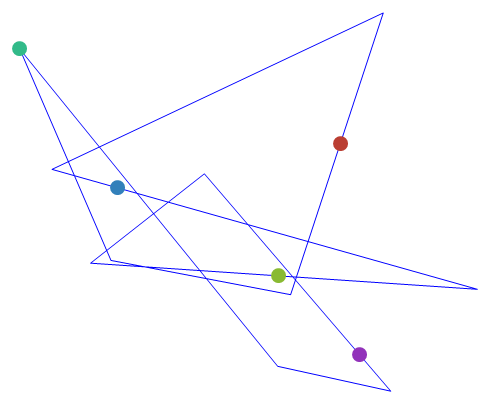SeedRandom[77]
coords = Append[#, First@#] &@RandomReal[1, {3, 2}];
Dynamic[Graphics[{Arrowheads[{{.05, Clock[{0, 1}, 5, 3]}}],
Blue, Arrow @ coords}, Axes -> False]]

With a custom arrowhead:
pnt = Graphics[{Red, PointSize[Large], Point[{0, 0}]}];
Dynamic[Graphics[{Arrowheads[{{.05, Clock[{0, 1}, 5, 3], pnt}}],
Blue, Arrow @ coords}, Axes -> False]]

Multiple points moving at different speeds on the boundary of an arbitrary polygon and stopping after three tours:
SeedRandom[77]
coords = Append[#, First@#] &@RandomReal[1, {10, 2}];
pnts = Table[Graphics[{ColorData[63, "ColorList"][[i]], AbsolutePointSize[15],
Point[{0, 0}]}], {i, 5}];
Dynamic[Graphics[{Blue,
Arrowheads[Table[{.05, Mod[i/5 + Clock[{0, 1}, i, 3], 1], pnts[[i]]}, {i, 1,
5}]],
Arrow @ coords}, Axes -> False, PlotRange -> {{-.1, 1.1}, {-.1, 1.1}}]]

Animate[Graphics[{Arrowheads[{{.05, t, pnt}}], Blue, Arrow @ coords},
Axes -> False], {t, 0, 1}]












